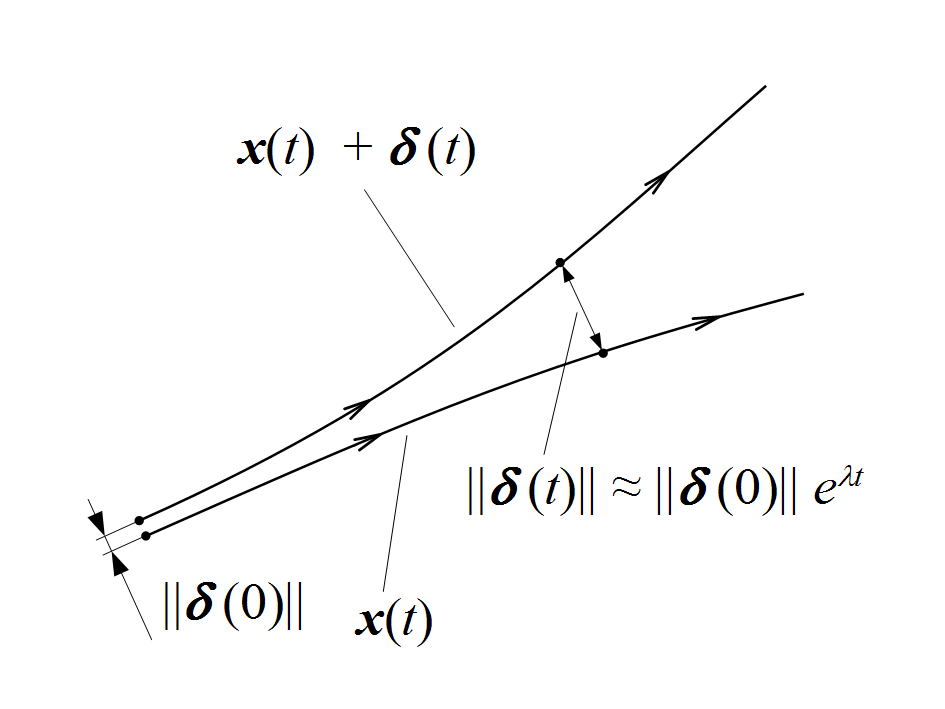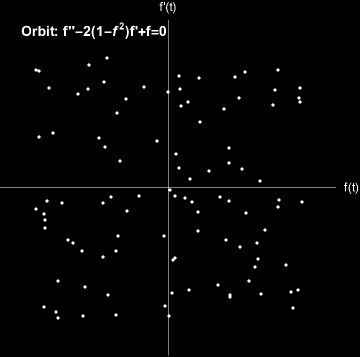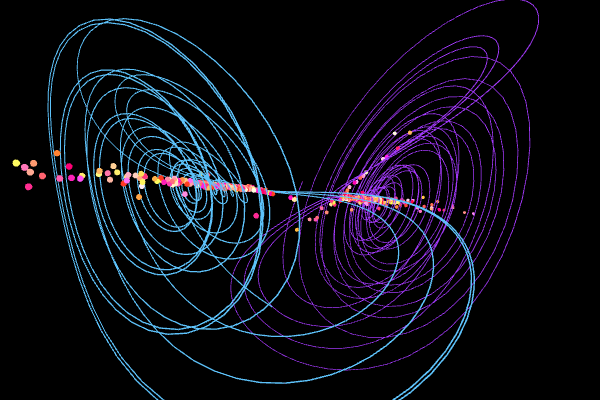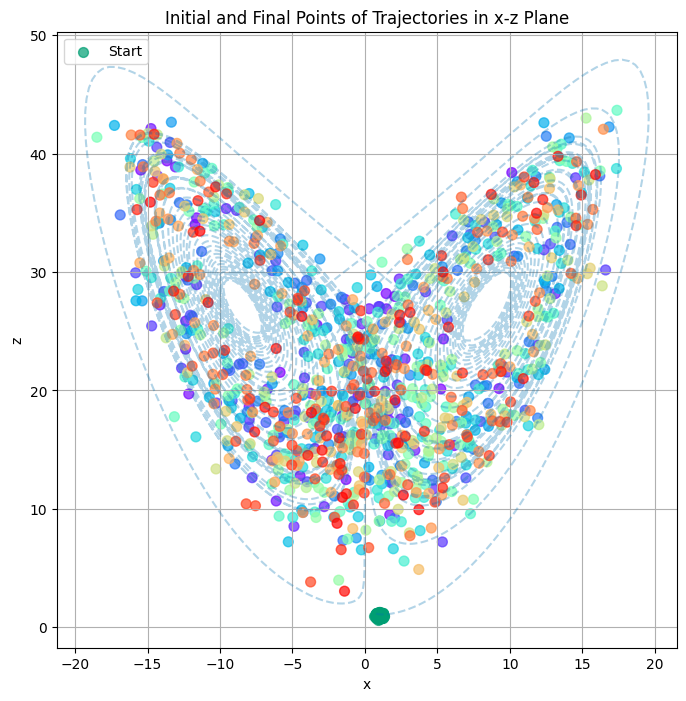Day 28 - Hallmarks of Chaos#

Conceptualizing the Lyapunov Exponent#
Trajectories diverge exponentially in time
Announcements#
Midterm 1 is graded
Homework 7 is due Friday
No homework next week
Midterm 2 will be assigned next Monday (due 18 April)
Second project check-in
Seminars This Week#
WEDNESDAY, March 26, 2025#
Astronomy Seminar, 1:30 pm, 1400 BPS, Bryan Terrazas, Oberlin College, Galaxy evolution and feedback modeling
FRIB Nuclear Science Seminar, 3:30pm., FRIB 1300 Auditorium, Dr. Jacklyn Gates of Lawrence Berkeley National Laboratory, Toward Pursuing New Superheavy Elements
Seminars This Week#
THURSDAY, March 27, 2025#
Special FRIB/MSU Nuclear Science Seminar with Colloquium, 3:30 pm, 1415 BPS, Mandie Gehring, LANL, Measuring Intense X-ray Spectra and an Overview of Space Research at Los Alamos National Laboratory
FRIDAY, March 28, 2025#
IReNA Online Seminar, 2:00 pm, In Person and Zoom, FRIB 2025 Nuclear Conference Room, Jordi José, Technical University of Catalonia, UPC (Barcelona, Spain), Classical novae at the crossroads of nuclear physics, astrophysics and cosmochemistry
Hallmarks of a Classically Chaotic System#
Deterministic
Sensitive to Initial Conditions
Non-periodic Behavior
Strange Attractors
Parameter Sensitivity
(Sometimes) Periodic Behavior
Limit Cycle#
A limit cycle is a closed trajectory in phase space that is an attractor for a dynamical system.

The Van der Pol Oscillator exhibits a limit cycle.
Random initial conditions converge to a limit cycle. Modeled with \(\mu=2\).
The Lyapunov Exponent#

\(\vec{\delta}(t)\) is the separation vector between two trajectories in phase space \(\vec{\delta}(t) = \vec{x}_2(t) - \vec{x}_1(t)\).
Do trajectories diverge exponentially in time, \(|\vec{\delta}(t)| \approx |\vec{\delta}(0)| e^{\lambda t}\)?
Each phase coordinate can change at a different rate: \(\vec{\lambda} = \langle \lambda_1, \lambda_2, \dots, \lambda_n \rangle\).
Largest \(\lambda_i > 0\)? Chaotic system.
Strange Attractors#
A strange attractor is a set of points in phase space that a chaotic system approaches.
Chen Attractor

\(\alpha=5\), \(\beta=-10\), \(\gamma=-0.38\).
Example 1: Duffing Equation#

Exhibits Periodic and Chaotic Behavior
Illustrates period doubling bifurcations as route to chaos
Example 2: Lorenz System#

Exhibits sensitive dependence on initial conditions Demonstrates the concept of a strange attractor
